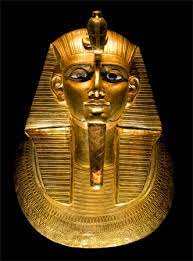Twenty-First Dynasty, Welcome, history enthusiasts, to “Top Ten Egypt“! Today, we dive into the intriguing narrative of Ancient Egypt’s Twenty-First Dynasty, a period of both tumultuous transitions and remarkable achievements. Join us as we unravel the story of reunification, cultural resurgence, and the enduring legacy of this dynamic chapter in Egypt’s history.
The Twenty-First Dynasty: An Era of Transition:
The Twenty-First Dynasty, spanning from approximately 1069 to 945 BCE, emerged in the wake of significant political and social changes in ancient Egypt. It followed years of division and strife during the Third Intermediate Period, yet witnessed a renewed sense of unity under the pharaohs who sought to revitalize the nation.
Pharaohs of Resilience and Sovereignty:
The Twenty-First Dynasty was marked by pharaohs who displayed resilience, diplomatic acumen, and a commitment to restoring Egypt’s authority. Notable rulers of this era include Smendes, Psusennes I, and Shoshenq I. Their reigns played a pivotal role in reconsolidating Egypt’s power, reaffirming its cultural heritage, and laying the groundwork for future prosperity.
Shoshenq I: Reviving Egypt’s Glory:
Shoshenq I, perhaps the most prominent pharaoh of the Twenty-First Dynasty, embarked on a campaign to reestablish Egypt’s dominance in the region. Known for his military triumphs and strategic alliances, Shoshenq I effectively restored Egypt’s authority and expanded its influence across the Eastern Mediterranean. His reign marked a turning point, igniting a period of revival and rejuvenation for the mighty civilization.
Cultural Revival and Architectural Splendor:
The Twenty-First Dynasty witnessed a renaissance of art, culture, and architecture, a testament to Egypt’s enduring legacy. The pharaohs of this era commissioned grand temples, lavishly decorated tombs, and intricate goldsmithing that showcased the unrivaled craftsmanship of the time. Noteworthy examples include the exquisite funerary treasures found in the tomb of Psusennes I at Tanis, a dazzling testament to Egypt’s artistic heritage.
Tanis: A Glittering Capital:
Tanis, the capital city during this dynasty, played a vital role in the revival of Egypt’s cultural splendor. It was a vibrant center of trade, commerce, and intellectual exchange, drawing artisans, architects, and scholars from across the realm. The treasures unearthed in Tanis offer a glimpse into the opulence and magnificence that adorned the city during this extraordinary era.
Legacy and Historical Significance:
The Twenty-First Dynasty holds immense historical significance as a period of rejuvenation, political reunification, and cultural resurgence. Despite its transitional nature, this era represented a critical chapter in Egypt’s history, ensuring the preservation of its ancient heritage and paving the way for future dynasties that would leave an indelible mark on the world.
As we conclude our captivating journey through the Twenty-First Dynasty in Ancient Egypt, we are reminded of the resilience, visionary leadership, and artistic brilliance that characterized this era of reunification. The pharaohs of this dynasty restored Egypt’s authority, revived its cultural heritage, and created a legacy that continues to fascinate and inspire us to this day.
Browse our complete list of Egypt tours Click Here



Comment (0)